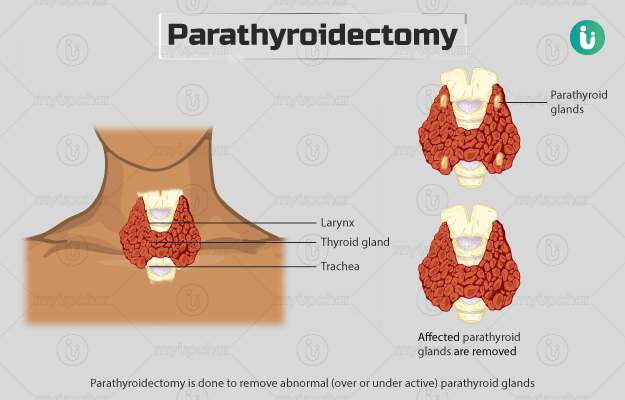Summary
Parathyroid surgery or parathyroidectomy is done to remove abnormal (over or under active) parathyroid glands. Parathyroid glands are a pair of glands located behind the thyroid gland in the neck. Hormones from these glands control the calcium blood levels. If any of the parathyroid glands becomes overactive - either due to a tumour or any other cause, it may lead to increased calcium levels in blood. Parathyroidectomy is the only procedure that is done to control over functioning parathyroid glands.
Prior to the surgery, you may have to undergo a few tests so the surgeon can check your fitness for the procedure. Parathyroidectomy is conducted using general anaesthesia and may take one hour. You will be able to go home on the same day. However, your doctor may schedule a follow-up one to two weeks after the surgery.












